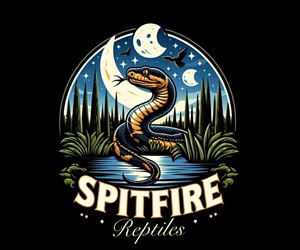
- Speckled Kingsnake
Salt-and-pepper Kingsnake
- Lampropeltis getula holbrooki
- Size:
- Hatchling: 7 - 9 in.
- Adult: 36 - 48 in.(normal) Record: 72 in
- Scalation:
- Dorsal: 21 - 23 rows
- Ventral: 197-221 in males, 198-222 in females
- Sub caudal: 46-59 in males, 37-51 in females
- Infra labial:8 - 11 (usually 9)
- Supra labial: Usually 7
- Anal Plate: Single
|
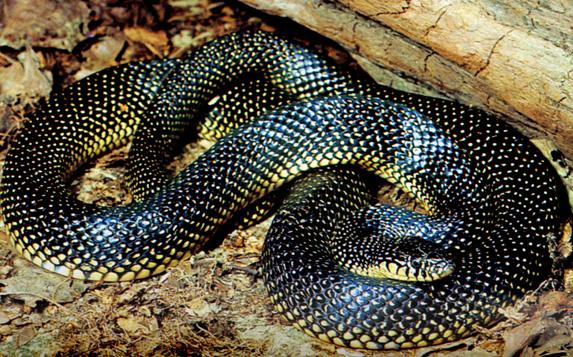
Image courtesy Martin Schmidt
click to enlarge |
Written by KJ Lodrigue, Jr.
Coloration
Speckled Kingsnakes are a dark brown or black coloration over most of the body. Yellow dots are spaced, normally one per scale, along the top of the snake. Juveniles tend to be a dark olive-green color. This fades to a purer black as the snake ages. Albinos and hypomelanistics have been wild-caught as of now. Albinos lack the black pigmentation but retain the yellow speckling. Hypomelanistics retain the yellow speckling, but are an overall chocolate brown color..
Head:
Two spots in the center of the head and 2 to 4 yellow lines on the edges of the dorsal surface of the head are normally present.
Dorsal:
The dorsal pattern consists of yellow spots on the dark background. In many areas, the dorsal spots become expanded laterally to form 39 to 94 irregular bands. This is the basic pattern of all juvenile Speckled Kingsnakes. Speckled Kingsnakes from Eastern Mississippi and Western Alabama tend to have a more regular pattern with symmetrical spots. Speckled Kingsnakes from southeastern Louisiana and southwestern Texas tend to lack all banding pattern as adults. The pattern of random speckles (one per scale) on these animals have been called multispeckled animals.
Ventral:
The underside is normally lite yellow with alternating dark blotches. Some specimens, especially those from Southwest Louisiana and Southeast Texas, may have a reddish-yellow ventral coloration with alternating dark blotches.
Range:
Speckled Kingsnakes are found throughout Louisiana, Mississippi, Arkansas, and Missouri. They intergrade with Desert Kingsnakes in Texas, western Oklahoma, and southwestern Kansas. In southern Alabama the intergrade with Eastern Kingsnake. Intergrades with the Black Kingsnake Occurs in Northern Alabama, western Tennessee, western Kentucky, southern Illinois.
Habitat:
This subspecies of kingsnakes utilize a wider variety of habitat types than most of the related subspecies. Speckled Kingsnakes can be found in freshwater and brackish swamps, bottomland hardwood forests, prairie streams, and upland forests. However, these snakes are probably most abundant in wetter habitats.
Speckled Kingsnakes are usually sited sunning themselve on stream-sidesor crossing roads during the warmer monthes. A common place to find them is near camps, old houses, and barns. Many are encountered while cleaning up woodpiles, stacks of firewood, or sheets of tin.
Prey:
Prey:
Captive specimens do extremely well on a diet composed entirely of captive produced domestic mice. Starting hatchling Speckled Kingsnakes on pinky mice may be problematic, though. Scenting techniques have proven to be effective. Wild juvenile Speckled Kingsnakes feed mainly on young snakes, particularly various garter snakes. Small mammals, frogs, skinks, anoles, and geckos will also be consumed.
Adults feed mainly on mice and rats; snakes (both venomous and nonvenomous) will be consumed. Since kingsnakes are partially immune to the venom of native snakes, rattlesnakes, cottonmouths, and coral snakes make up a portion of the diet. Watersnakes make up a substaintial part of their diet. Other Speckled Kingsnakes also are consumed. Birds and their eggs are also readily consumed. An occasional fish may be eaten.
Behavior:
Wild-caught specimens range from completely docile to aggressive monsters. Most start off calm, but almost all will calm down in captivity. Captive produced animals normally are calm throughout their life. Since these tend to be aggressive feeders, care should be taken at feeding time. Do not handle the animal at feeding time or maintain 2 together at any time.
As with most of the snakes in this subfamily, Speckled Kingsnakes will rattle their tail when aggitated. These snakes will readily musk and defecate when first caught or frightened as a defense mechanism.
Breeding:
Breeding is accomplished by following the normal recipe for North American Colubrids. The snakes should be cooled down to 50 to 65F for 8 to 12 weeks. The snakes should not be fed for 14 days prior to this cooldown period. This is to allow all of the food to pass through the snakes gut. The temperature should then be lowered over 10 days. Light should also be reduced during this period. After the cooldown period, the reverse process should be done. Once feeding recommences, the snakes should shed within a month. Placing the female with the male should result in breeding activity. 7 to 17 eggs should be laid 5 to 7 weeks later. It should take about 60 days for them to hatch at 83F. The young will be 7 to 9 inches.
Literature Cited:
Conant, R. and J. Collins. 1991. A field guide to reptiles and amphibians of eastern and central North America. Houghton Mifflin Co., Boston.
Blaney, R. M. 1977. Systemtics of the common Kingsnake, Lampropeltis getulus (Linnaeus). Tulane Studies in Zoology and Botany. 19:47-103.
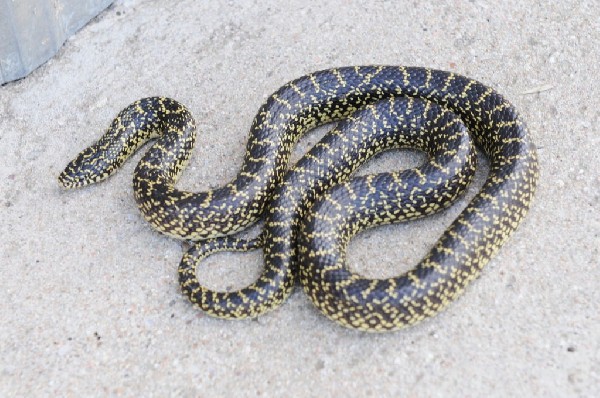
Williamson County, Texas (intergrade)
Gallery Photo by Jeff Barringer
Click to Enlarge |
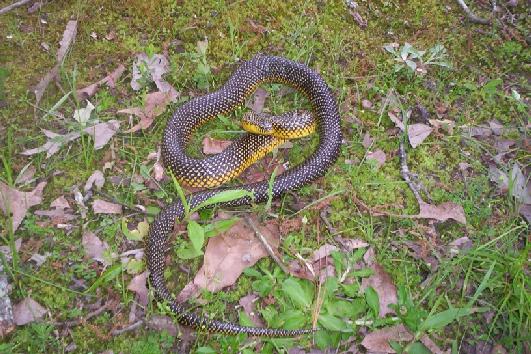
Houston, Texas
Gallery Photo by serpentboy
Click to Enlarge |
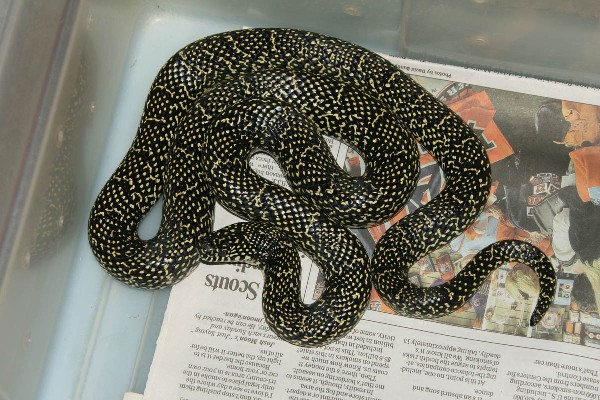
Wilcox County, AL
Gallery Photo by rick d
Click to Enlarge |
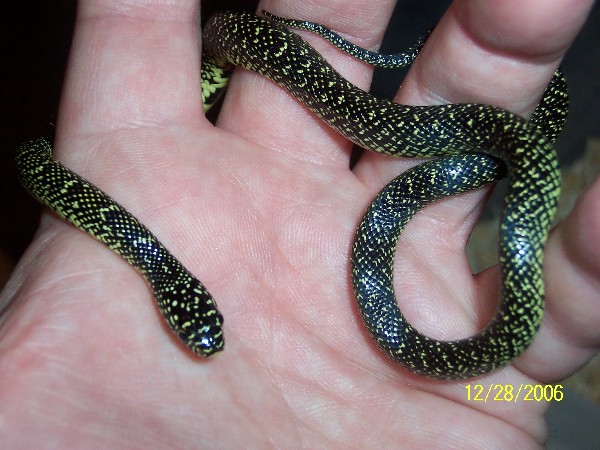
Gallery Photo by Steve Craig
Click to Enlarge |
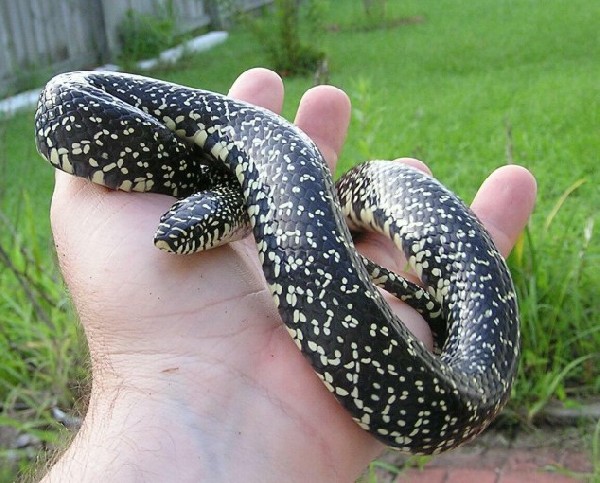
Baton Rouge, Louisiana
Gallery Photo by wftright
Click to Enlarge |
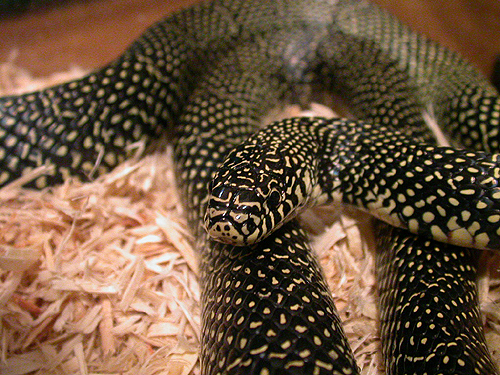
Central Alabama
Gallery Photo by SalS
Click to Enlarge |
|
|
Sponsored Link
New & Updated Business Listings
Looking for a reptile or amphibian related business? A reptile store, breeder, importer,
maunfacturer or supplier? Our business directory lists some of the most popluar herp businesses in the world.
| Locate a reptile or amphibian business by name:
|
|
Recent Kingsnake Forum Forum Posts
• Kingsnake with possible IBD, posted by King
• Advice needed for Alterna, posted by rani
• Cage for Cali/Mexican Kingsnake, posted by Gregg_Mac
• Cage for Cali/Mexican Kingsnake, posted by Gregg_Mac
• when to separate Cal king babies, posted by steeve111
• Scarlet King temps, posted by johnfin
• Please ID This King Snake, posted by Cel49
• New VE 6 Rack, posted by unbeatablebonz
• Is there anybody in here, posted by Jlassiter
• can anybody help?, posted by tzahif
• cannabis is good for snake?, posted by Sharron568
• milk snake habitat, posted by mcevermj
• Please id!!!!, posted by Shaleeclifton96
• Feeding Issue - Please Help!, posted by Acton
• 18 year old king, scale rot?, posted by brainshatterer
Recent Kingsnake Classifieds:
- Now Buying Kingsnakesall...
- Purple Passion Cal King
- Albino Het Hypermel Het ...
- Aberrant Albino Het Hype...
- Yearling Hypo Albino Bro...
Banner Pool
Snake Forums
Launched in 1997, the kingsnake.com message board system is one of the oldest and largest systems on the internet. Here you may share and discuss information with others about your favorite reptile and amphibian related topics such as care and feeding, caging requirements, permits and licenses, and more.
Click a link below to visit a forum or a tab above to see more forums.
|
Enter a keyword to search. Search in: |
Search Tips - More - Old forum archives
Snake Forums
Lizard Forums
Launched in 1997, the kingsnake.com message board system is one of the oldest and largest systems on the internet. Here you may share and discuss information with others about your favorite reptile and amphibian related topics such as care and feeding, caging requirements, permits and licenses, and more.
Click a link below to visit a forum or a tab above to see more forums.
|
Enter a keyword to search. Search in: |
Search Tips - More - Old forum archives
More Forums
Launched in 1997, the kingsnake.com message board system is one of the oldest and largest systems on the internet. Here you may share and discuss information with others about your favorite reptile and amphibian related topics such as care and feeding, caging requirements, permits and licenses, and more.
Click a link below to visit a forum or a tab above to see more forums.
|
Enter a keyword to search. Search in: |
Search Tips - More - Old forum archives
Venomous Forums
Amphibian Forums
Turtles & Tortoises
General Forums
|












